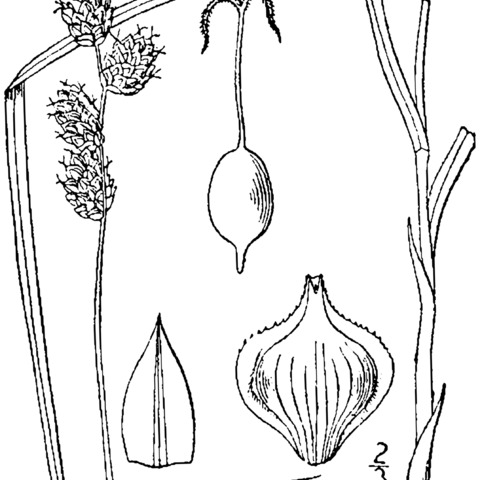Tufted, aphyllopodic, 3–10 dm; main lvs 2–4 mm wide, shorter than the stems, their sheaths ventrally green-veined almost to the summit, with only a short hyaline area; spikes 4–8, gynaecandrous, silvery-green or silvery-brown, subglobose to ovoid, 8–13 mm, obtuse at base with few staminate fls, sessile and closely aggregated in an erect cluster 2–4 cm; pistillate scales shorter than the perigynia, ovate or lance-ovate, nearly hyaline with a narrow green center, short-aristate; perigynia flat, 3.7–4.9 × 2.8–3.5 mm, 1.25–1.7 times as long as wide, several-nerved on both faces, broadest near or even above the middle, broadly rounded to the narrow beak less than half as long as the obovate body; achene lenticular, 1.5–2 × 1 mm. Wet soil, mostly near the coast, from Mass. to Fla. and Tex., also inland in N.Y., O., s. Ont., Mich., Ind., and Mo.

